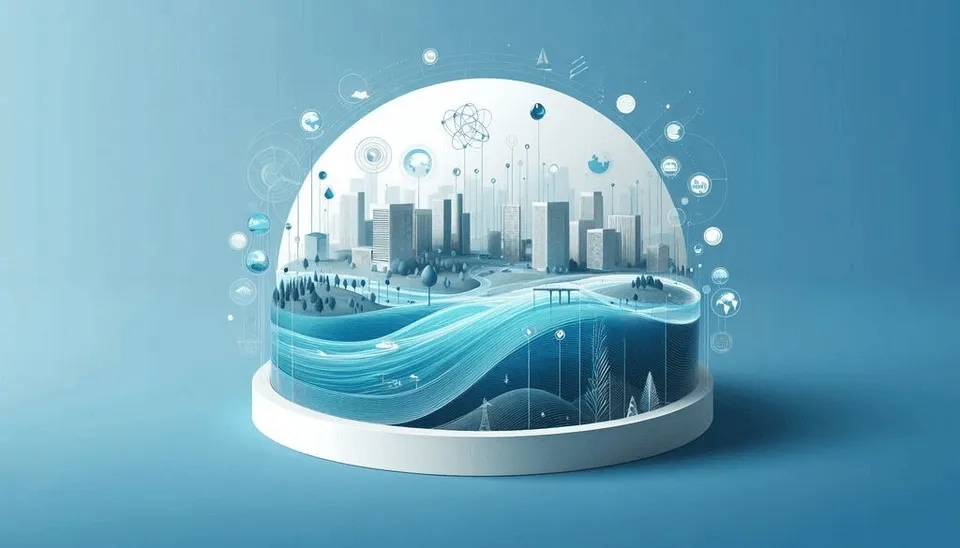
Did you know that by 2050, it is estimated that two-thirds of the world's population will live in cities, putting a tremendous strain on urban water resources?
Sustainable urban water management is that cities can meet the growing demand for water resources while minimizing the environmental impact of urbanization.
How Integrated Urban Water Management Holds the Key to Sustainable Cities? Urban water management plays a crucial role in addressing the challenges associated with the growing urban population and the increasing demand for water resources. An integrated urban water management plan, such as an urban water management plan, is essential for ensuring sustainable urban water management. By adopting an integrated approach, cities can optimize their water resources and minimize the environmental impact of urbanization. The traditional approach of relying on grey infrastructure, such as gutters, pipes, and tunnels, to move stormwater away from where we live to treatment plants or local water bodies is no longer sufficient. The existing capacity of grey infrastructure to manage large volumes of stormwater is decreasing in many areas across the country. To meet this challenge, many communities are turning to Green Infrastructure (GI) and Low Impact Development (LID) techniques to bolster their capacity to manage stormwater (Sun et al. 2020; An et al. 2023).
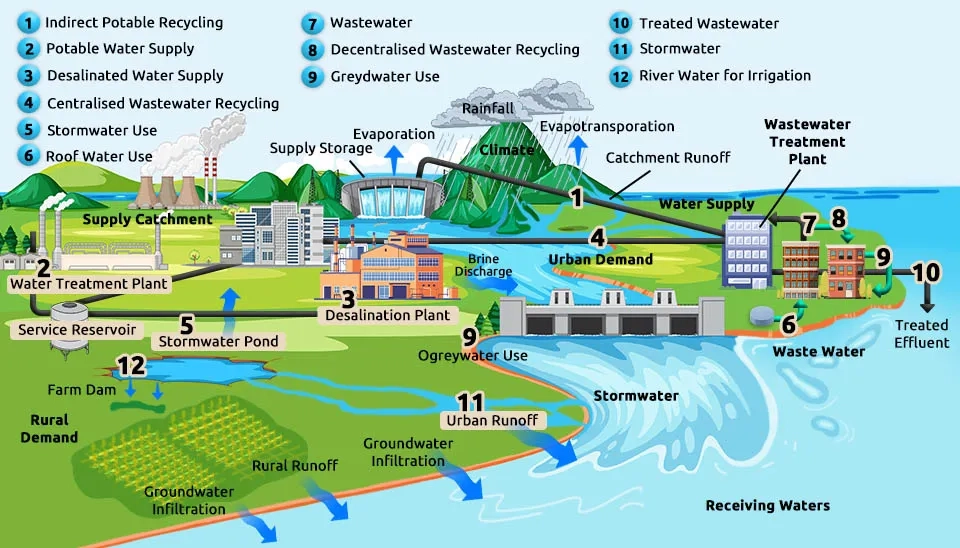
Urban Stormwater Management
Urban stormwater management refers to the management of stormwater runoff in urban areas. Urban stormwater management techniques include BMPs, GI, LID, SUDS, and WSUD. Urban stormwater management is becoming increasingly important as urban areas continue to expand and face greater challenges related to flooding and water quality (Fletcher et al., 2015; D’Ambrosio et al., 2023). Urban drainage refers to the collection, conveyance, and management of stormwater runoff in urban areas. Urban drainage systems are typically composed of a network of pipes, channels, and other infrastructure that is designed to transport stormwater runoff to a discharge point. Urban drainage systems are often designed to manage peak flows and prevent flooding (Piadeh et al., 2022).
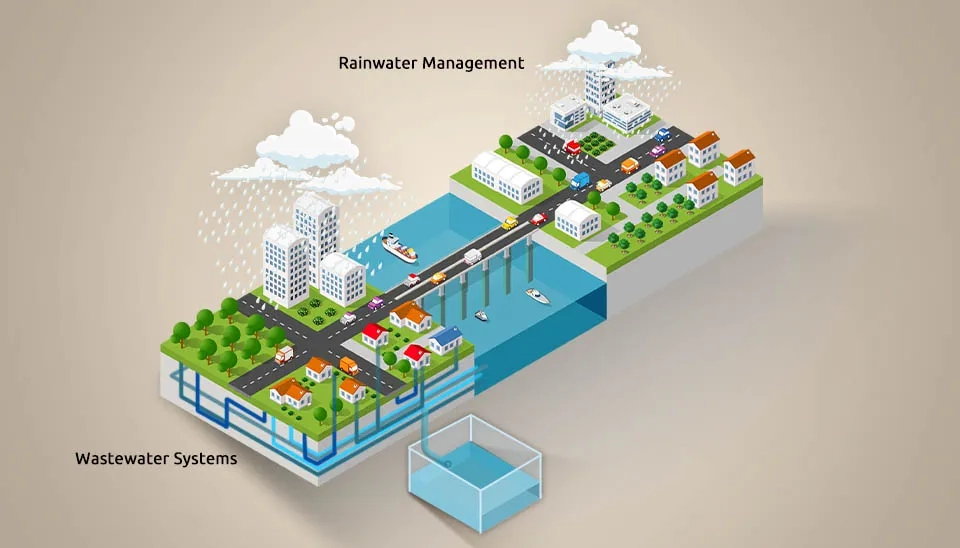
1. Best Management Practices (BMPs)
BMPs are a set of techniques that are designed to minimize the negative impacts of urban development on the environment. BMPs for urban stormwater management include source control measures, which aim to reduce the amount of runoff generated by a site, and Stormwater Control Measures (SCMs), which aim to treat and manage runoff that cannot be eliminated at the source. Examples of BMPs include rain gardens, green roofs, permeable pavement, and bioretention systems. (Ahsan et al. 2023)
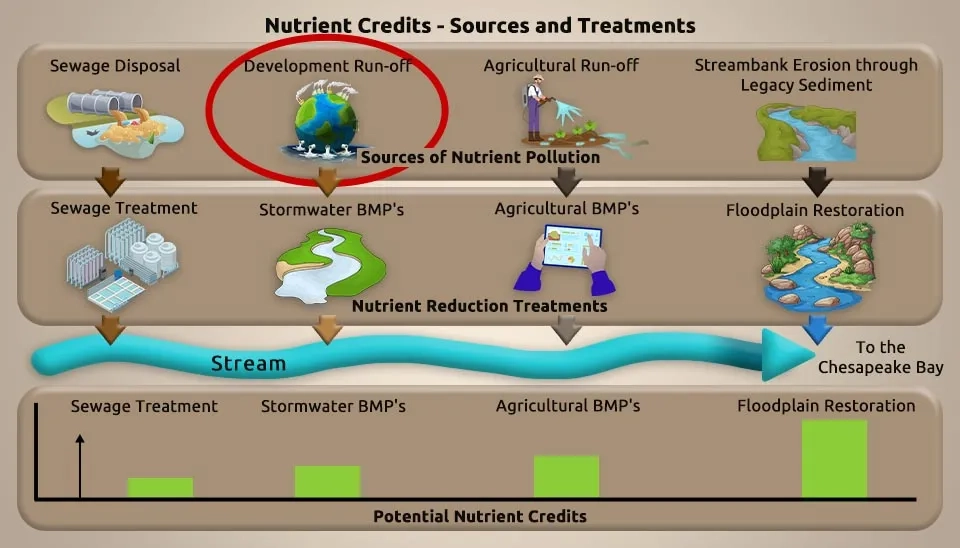
2. Green Infrastructure (GI)
Green Infrastructure (GI) is a term used to describe a collection of natural and engineered systems that are designed to mimic natural hydrologic processes and manage stormwater at the source. GI techniques include bioswales, permeable pavement, green roofs, rain gardens, and constructed wetlands. GI has been shown to be effective in reducing stormwater runoff, improving water quality, and providing other benefits such as urban heat island mitigation and biodiversity conservation. (Hung et al. 2022; Mogra et al. 2023)
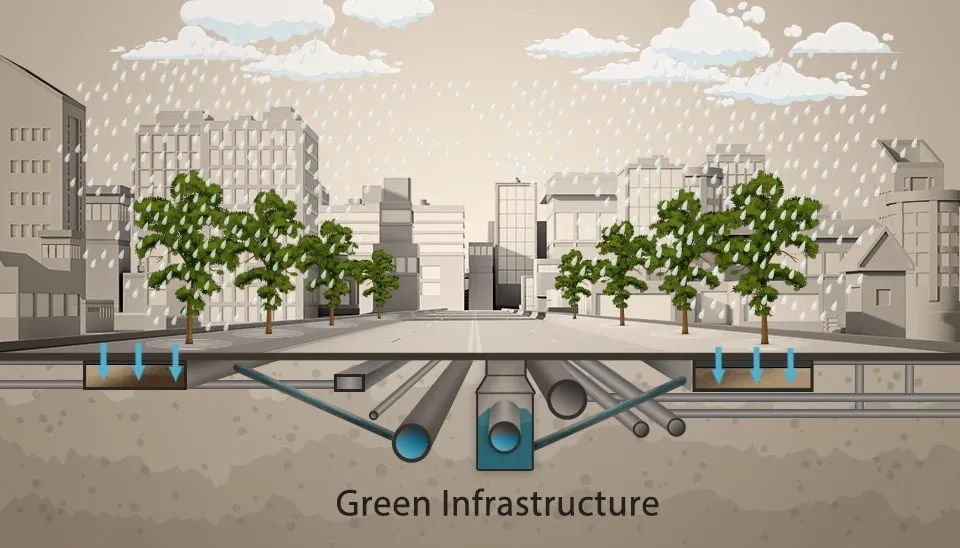
3. Low Impact Development (LID)
Low Impact Development (LID) is a development approach that seeks to minimize the environmental impact of urban development by using practices that mimic natural hydrologic processes. LID techniques include permeable pavement, rain gardens, green roofs, and bioretention systems. LID is a subset of GI and is often used interchangeably with the term Low Impact Urban Design and Development (LIUDD). (Song 2022)

4. Sustainable Urban Drainage Systems (SUDS)
Sustainable Urban Drainage Systems (SUDS) are a set of techniques that are designed to manage stormwater runoff in a sustainable and environmentally friendly manner. SUDS techniques include permeable pavement, green roofs, rain gardens, and constructed wetlands. SUDS systems are designed to mimic natural hydrologic processes and are often integrated into the landscape or built environment. (Mahia et al. 2023)
5. Water Sensitive Urban Design (WSUD)
Water Sensitive Urban Design (WSUD) is a design approach that seeks to integrate water management into the urban landscape. WSUD techniques include green roofs, rain gardens, rainwater harvesting, and constructed wetlands. WSUD is a holistic approach that considers the entire urban water cycle, from water supply to wastewater treatment. (U.S. Environmental Protection Agency, 2023)
6. Integrated Urban Water Management (IUWM)
Integrated Urban Water Management (IUWM) is a new and integrated approach to planning, providing and managing urban water services that considers all components of the urban water system, including water supply, wastewater, and surface runoff, as part of an integrated physical system. In this approach, the physical water system is considered in relation to organizational institutions and the broader natural environment. As opposed to traditional practice that treats each element of the water system separately, IUWM emphasizes the relationship between elements as well as between people, infrastructure, and the natural world. It is designed to minimise environmental impacts, optimise utilisation of water resources, and improve economic and social efficiency. IUWM provides a platform for cities to provide water supply and sanitation services and also keeping the natural environment and costs in check. Practice examples of implementation in nations such as Australia show that the integration of IUWM in urban policymaking can help create healthier, greener, and climate-resilient cities. (Mitchell, 2006)
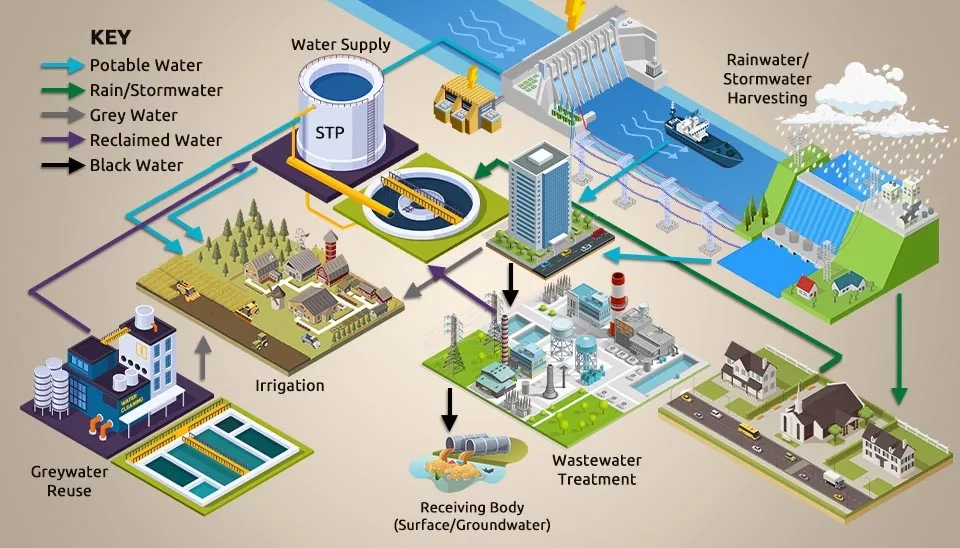
7. Smart Water Technologies (SWT)
Smart water technologies (SWT) show a sample of changes in urban water management by simulating digital solutions ranging from IoT and sensors to machine learning algorithms to big data analytics. They enable real-time monitoring, leak detection, consumption forecasting, and pollution monitoring, thereby enhancing both operational efficiency and sustainability of urban water systems. Research indicates that IoT and sensors are behind the drive in current deployments, and leakage detection is one of the prominent areas of use. While city-scale systems strive to achieve optimization across the infrastructure, residential and industrial systems are also embracing cloud-based systems and data analytics for making decisions. Smart technologies also facilitate decentralized control, providing municipalities with the capability to respond in real time to system inefficiencies or failures. It is obvious that citizen involvement is permitted, and water usage data is provided in a transparent format. The use of smart solutions leads to a possible reduction of water losses to a minimum, lower costs, and the achievement of climate resilience. (Aivazidou et al. 2021)
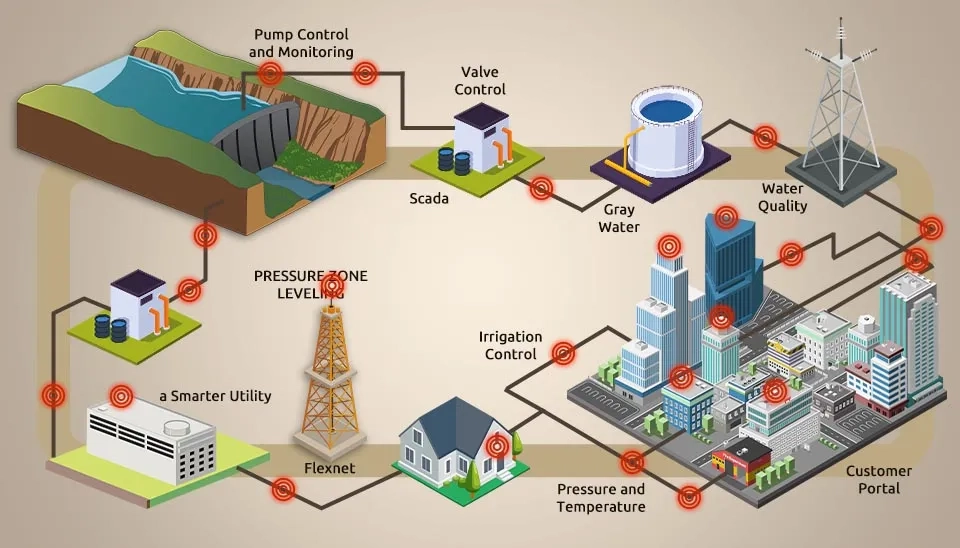
8. Public Engagement and Education
One of the notable keys to constructing the resilience of urban water systems is education and public participation. Through the inclusion of wide ranges of voices, ranging from residents and scientists to policymakers and water utility managers, communities are better able to tackle the aggravatingly intricate water resources issues. This process, called Public Engagement with Science (PES), encourages two-way learning and co-decision-making, a deviation from the traditional top-down approaches. Workshops, local seminars, and training programmes are essential in breaking down scientific information into specific actions that can be taken by individuals. With public outreach and education at the core of water management, cities will be able to anticipate, respond to, and mitigate the impacts of climate change, increasing populations, and limited supplies. (Golladay et al., 2020; Sharp, 2017)
9. Policy and Governance
in this contemporary era, the way cities govern and make policies about water plays a vital role in solving water challenges. Traditional systems often rely on top-down decisions and outdated infrastructure, which are no longer enough to deal with modern problems like climate change, population growth, and water scarcity. Instead, sustainable urban water management needs clear, long-term policies and strong coordination between different government levels and sectors. A major problem is here; many water systems are managed by separate agencies with little communication or shared planning. This fragmentation leads to inefficient decisions and slow action. To improve this, experts suggest a hybrid governance model that combines rules from government, innovation from the private sector, and flexible cooperation between organizations. Such an approach helps cities be more adaptive, cost-effective, and ready for future risks. In short, good governance and smart policies are key to building sustainable and resilient urban water systems. (Meene et al., 2011; Neto, 2016)
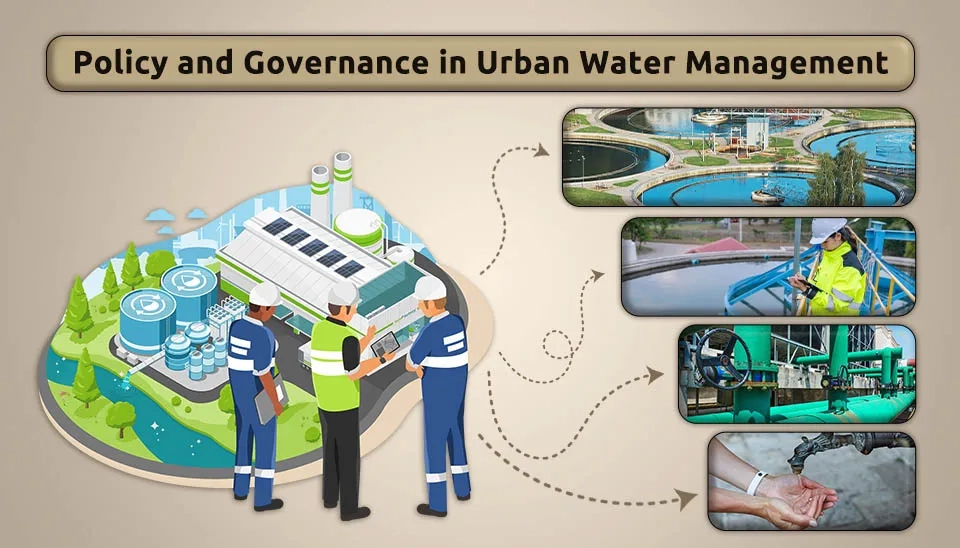
Conclusion
In conclusion, the challenges of urbanization and the increasing demand for water resources require a holistic approach to urban water management. Integrated Urban Water Management (IUWM) plans are essential for ensuring sustainable urban water management, and cities must adopt an integrated approach to optimize their water resources and minimize the environmental impact of urbanization. The traditional approach of relying on grey infrastructure is no longer sufficient, and communities must turn to green infrastructure (GI) and low impact development (LID) techniques to bolster their capacity to manage stormwater. Sustainable Urban Drainage Systems (SUDS) and Water Sensitive Urban Design (WSUD) are also important components of sustainable urban water management. By implementing sustainable urban water management strategies, cities can ensure the availability of clean and safe water for their residents while minimizing the environmental impact. The information collected from Urban Water Management Plans (UWMPs) is useful for local, regional, and statewide water planning, and the adoption of advanced technological solutions and practices that improve water use efficiency should be a primary goal for water management to reduce water loss, support the sustainability of water resources, and increase the economic profitability of water.